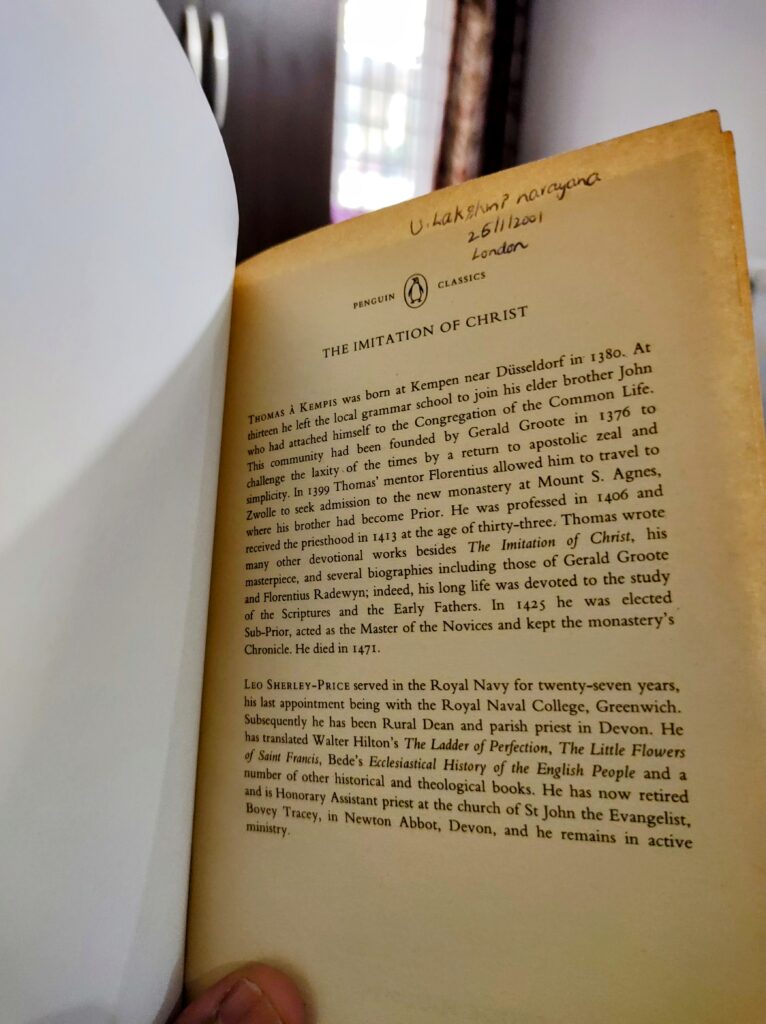
In the realm of leadership, there are numerous styles and philosophies that leaders can adopt. One such approach is servant leadership, a concept deeply rooted in Christian values. This leadership style, characterized by humility, empathy, and service to others, is a reflection of the teachings of Jesus Christ.
The Teachings of Jesus Christ
Jesus Christ, the central figure of Christianity, is often depicted as a servant leader. His teachings emphasize love, humility, forgiveness, and service to others. These principles are not only central to Christian faith but also form the foundation of effective leadership.

In the book ‘The Imitation of Christ’ by Thomas Kempis, the ethical and moral principles that Jesus Christ embodied and taught are explored in depth. This book was one of the selected readings for the ‘Management by Human Values’ class and workshop I took in Kolkata. Kempis advocates for a personal, inward, and humble approach to Christian faith, emphasizing the importance of living the teachings of Christ rather than merely revering them. He stresses humility, self-denial, and renunciation of worldly desires, urging readers to seek inner peace through the imitation of Christ’s life and teachings.
Servant Leadership
Servant leadership, a term coined by Robert K. Greenleaf in 1970, is a leadership philosophy that prioritizes the needs of the team and the larger community over the needs of the leader. This approach encourages collaboration, trust, and the ethical use of power. It emphasizes that leaders should be role models who inspire and influence their teams through their actions and decisions, much like Christ influenced his disciples and followers.
A good leader, much like Christ, serves others and puts their needs first. This servant leadership, which is a core Christian principle, encourages collaboration, trust, and the ethical use of power. It emphasizes that leaders should be role models who inspire and influence their teams through their actions and decisions, much like Christ influenced his disciples and followers.
Christian Values in Leadership
The teachings of Jesus Christ about forgiveness and resilience can also be applied in a leadership context. Leaders will face challenges and setbacks, much like Christ did. The ability to forgive, learn from these experiences, and continue moving forward is a crucial leadership skill.
In essence, the teachings of Jesus Christ offer valuable insights and lessons that can be applied in the context of management and leadership. They promote values and behaviors that not only contribute to personal growth and ethical conduct, but also to effective leadership and management. Therefore, my understanding of Christian teachings, particularly the life and teachings of Jesus Christ, has enriched my perspective on leadership and management and continues to guide my approach in these areas.
Universal Values in Leadership
Interestingly, these principles of humility, empathy, and service are not exclusive to Christianity. They are echoed in the teachings of other spiritual leaders like Ramakrishna Paramahamsa and Swami Vivekananda. Ramakrishna Paramahamsa, for instance, had a profound spiritual experience that affirmed for him that Christianity, like other religions, is a path to divine consciousness. Similarly, Swami Vivekananda wrote an introduction to “The Imitation of Christ,” highlighting the shared ideas between the book and Hindu texts like the Bhagavad-Gita. This highlights a universal truth – the core tenets of most spiritual paths are fundamentally the same. They all guide towards a life of love, humility, and service.
Conclusion
Christian values and leadership are deeply intertwined. The teachings of Jesus Christ provide a blueprint for servant leadership, emphasizing humility, empathy, and service to others. By embodying these principles, leaders can foster a positive work environment, build strong teams, and effectively guide their organizations towards success. Moreover, the universal nature of these values, as seen in the teachings of Ramakrishna Paramahamsa and Swami Vivekananda, underscores their relevance and applicability across different cultures and religions.
As an aside, it’s fascinating how my journey with Christianity, starting from my school days, through the profound insights from ‘The Imitation of Christ’, and the impactful ‘Passion of the Christ’ movie, has shaped my understanding of leadership. It’s underscored the importance of humility, empathy, and service, mirroring Christ’s teachings, and has deeply influenced my approach to leadership.



